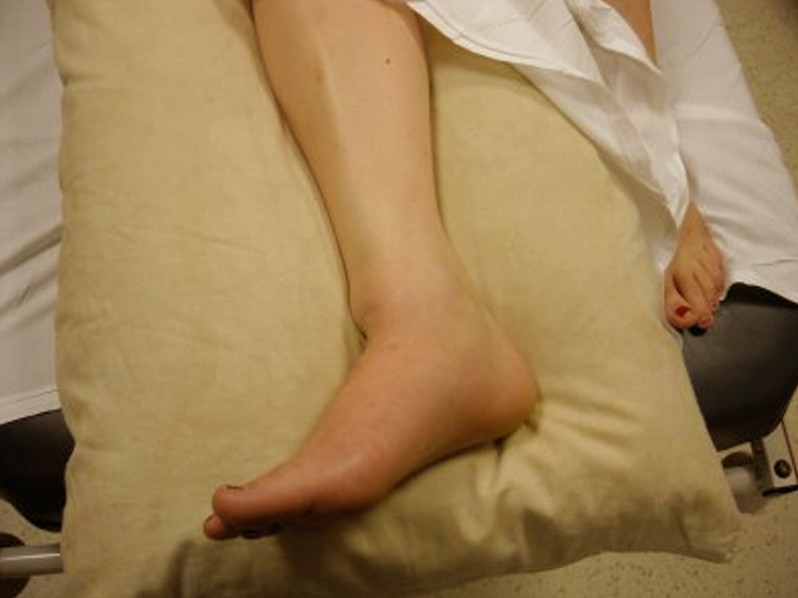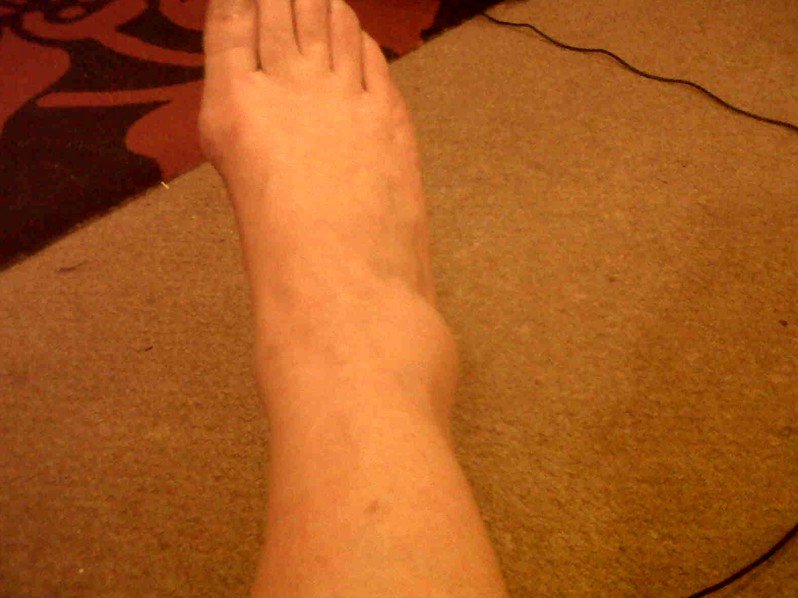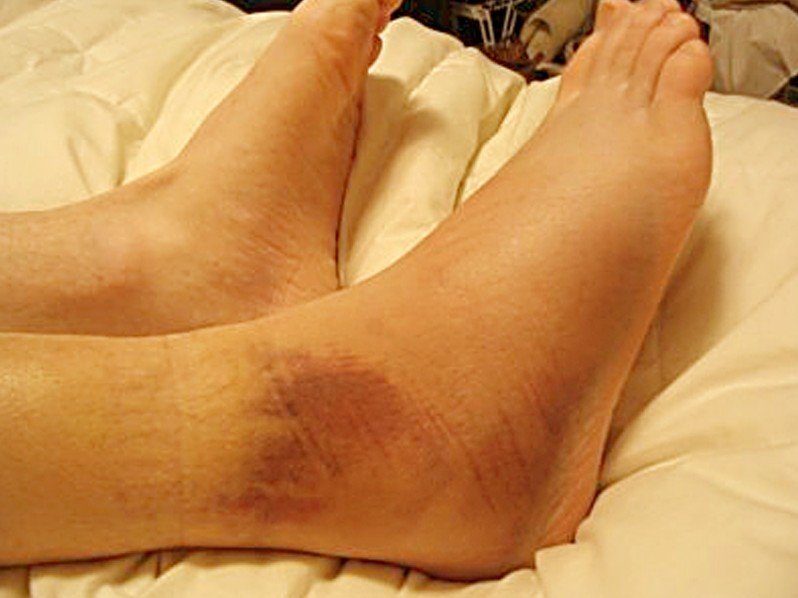Broken Ankle
Last reviewed by Dr. Raj MD on January 12th, 2022.
What is a Broken Ankle?
A broken ankle is an injury that is common and can be a tiny crack in your ankle bone up to breaks that shatter and can come through your skin. Your ankle joint is made of three different bones that include:
- Your tibia which is the main bone of your lower leg. It makes up the inside of your anklebone.
- Your fibula which is the smaller bone in your lower leg that parallels your tibia. It makes up the outside of your anklebone.
- Your malleoli, plural, or malleolus, singular which are at the far ends of both your fibula and tibia. They are the lumps of bone that a person can feel and see on the outside and inside of your ankle. Putting them together will form an arch, which sits on top of one of your bones in your foot called the talus.
Your ankle is the joint that helps move your feet and supports your balance. There are several different types of broken ankles, which include:
- Non-displaced fracture – the bones are cracked but they are still attached to the joint.
- Displaced fracture – the bones that are broken are misaligned
- Avulsion fracture – this is a serious type of broken ankle in which part of the bone is torn away from your bone in which it was attached by your ligaments and muscles
- Closed fracture – this is when the skin remains intact even though you have a broken ankle.
- Compound fracture – when the bones are cracked and rip the outer layer of your skin at the area of the injury. It is also called an open fracture because the open wound where the bone came through the skin could lead to an infection.
Symptoms
The symptoms of a broken ankle can help your physician decide just what type of broken ankle you have.
- Severe ankle pain is usually the first indication that you have a broken ankle. You may also trigger pain just by touching the area and sometimes the pain is so bad you cannot stand up.
- The pain may decrease when you rest and stay off it but the pain can increases when you try to stand or walk on it.
- After breaking your ankle you may also show signs of shock because you may not feel the intense pain for a few minutes.
- The pain is usually followed by swelling where the fracture occurred. The swelling can also happen on your leg up to your knee. It is common to see both a swollen leg and ankle if you have a broken ankle.
- At the site of the fracture you may notice the appearance of some blisters and bruises. Around the injured site because there is an interruption of blood circulation you may see the area turning a bluish black.
- Because you have broken your ankle it may out of place and deformed when you compare it to your other ankle.
- There have been rare cases of hearing a cracking or popping sound that could indicate a broken ankle.
Although there is pain with a broken ankle it may not come from the area where it was broken.
Causes
There are many different ways in which you can get a broken ankle. Some of these different ways can include:
- Rolling your ankle out or in
- Twisting your ankle from side to side
- Having severe force applied to the joint by coming straight down on your joint such as jumping from a very high level.
- Extreme extending or flexing your joint
- Being in some type of accident such as a car accident, and having your ankles crushed
- Falling down or tripping
- Having a heavy weight drop on your ankle
- Missteps such as just putting your foot down the wrong way.
- Over using your feet such as by running or jogging a long distance can cause a stress fracture.
- Sports injuries
Treatment
The immediate treatment for a broken ankle is to apply an ice compress to help reduce the swelling around where it has been broken. If the bone is sticking through the skin it is not advisable to apply ice to the actual broken area but around the area being careful to not disturb or touch the bone sticking out of the skin. When you apply ice it can also help with the pain and can also prevent any more damage to the tissue that is around the broken ankle. You should either be taken to the hospital or call an ambulance for transportation to the hospital for treatment where they will do an x-ray to see what type of fracture has occurred or if it just a sprain. For the pain you can take over-the-counter pain relief medication
Splint
If the impact of the trauma has displaced the ankle bone you should apply a splint where the swelling is at the worse. The reason that you may need to use a splint is to re-set the bone back to the original place.
Cast
When the swelling has been reduced the physician will usually apply a cast that is made of fiberglass, Plaster of Paris, or plastic to help the ankle bone heal by keeping it in place. When you have a cast on you need to make sure that you keep it dry and that it does not become loose, break, or crack. If this happens you need to see your physician to get it corrected so your ankle bone will heal properly.
Exercise
After a few weeks after breaking your ankle you will start to build your endurance for walking. You will, at first, be allowed to walk a little with the help of crutches or a walker. You need to be careful that you do not go overboard and try to too much at one time. You need to take your time and start out gradually and work up to walking more each day. If you try to hurry up walking it could cause pain, inflammation and it could even slow down the healing process.
Physiotherapy
When the physician takes off the cast you will usually do physiotherapy exercises to provide flexibility to your ankle joint and help improve your blood circulation in your feet. You need to take it slow and not try to rush into running, jogging, or walking briskly. In order to complete the healing process after the cast is off you may need to rest your ankle a little more. You should walk at first using a cane or some other type of walking stick.
Surgery
If your broken ankle is a compound fracture which is where the bone is sticking out of the skin or in order for the bones to align up properly to heal. Depending on they type of broken ankle you have suffered, there are different types of surgeries that can be performed. Some of those types of surgeries could be:
- Using a metal plate with screws
- Having a rod placed down the center of your bone
- Attaching just screws
Some times these various materials are removed after your broken ankle has healed or they may need to stay in order to enable you to walk.
Recovery Time (Healing time)
Normally a broken ankle can take approximately six weeks to heal but it all depends on how severe the injury is and they type of fracture, or broken ankle, you have. To gain full range of motion of your ankle joint and use it can take several months. If you have had surgery to fix your broken out it will take longer to heal.
Broken Ankle Pictures
Photos, Images and Pictures of Broken Ankle…



